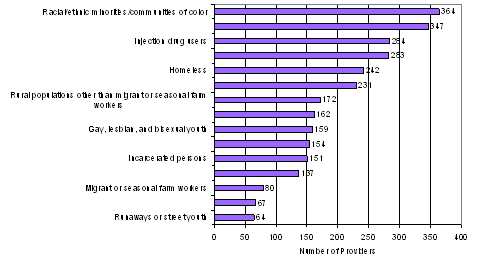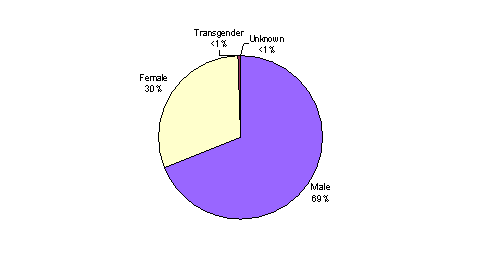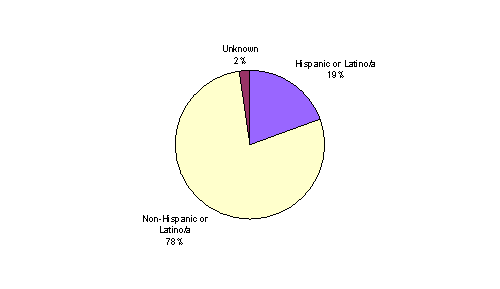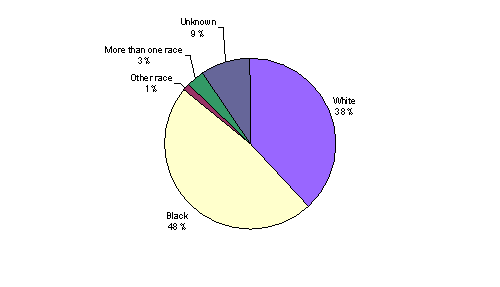|
Table
of Contents:
Description of Early Intervention Service
(EIS) Providers
- Title
III Early Intervention Services
- Types
of Provider Organizations Receiving Title III EIS Funds
- Ownership
Status of Provider Organizations Receiving Title III EIS
Funds
- Populations
Especially Targeted for Outreach or Services among Providers
Receiving Title III EIS Funds
Description
of Primary Care Clients Served by Title III EAS Programs
- Total
HIV Positive Patients Receiving Primary Health Care Services
from Title III Providers by Gender
- Total
HIV Positive Patients Receiving Primary Health Care Services
from Title III Providers by Age
- Total
HIV Positive Patients Receiving Primary Health Care Services
from Title III Providers by Ethnicity
- Total
HIV Positive Patients Receiving Primary Health Care Services
from Title III Providers by Race
- Total
HIV Positive Patients Receiving Primary Health Care Services
from Title III Providers by Exposure
- Data
Considerations
DESCRIPTION
OF EARLY INTERVENTION SERVICE PROVIDERS
Title
III Early Intervention Services
- 334
Title III EIS grantees received funds in 2003
- 429
Title III EIS providers reported CADR data in 2003
- 52
grantees contracted with multiple providers to deliver EIS
services
- More
than three-quarters of organizations receiving Title III
EIS funds also receive funds from other CARE Act Titles
TABLE
OF CONTENTS
Types
of Provider Organizations Receiving Title III EIS Funds
N=429
Providers

- Source:
2003 CARE Act Data Report, Section 1, Item 7
- Percentages
may not sum to 100 percent due to rounding error
TABLE
OF CONTENTS
Ownership
Status of Provider Organizations Receiving Title III EIS Funds
N=429
providers

- Source:
2003 CARE Act Data Report, Section 1, Item 9
- Percentages
may not sum to 100 percent due to rounding error
TABLE
OF CONTENTS
Populations
Especially Targeted for Outreach or Services among Providers
Receiving Title III EIS Funds
N=429
providers

- Source:
2003 CARE Act Data Report, Section 1, Item 15
TABLE
OF CONTENTS
DESCRIPTION
OF PRIMARY CARE CLIENTS SERVED BY TITLE III EIS PROGRAMS
Total
HIV Positive Patients Receiving Primary Health Care Services
from Title III Providers by Gender
N=185,933
HIV Positive Patients

- Source:
2003 CARE Act Data Report, Section 6.1, Items 56, 57, and
59
TABLE
OF CONTENTS
Total
HIV Positive Patients Receiving Primary Health Care Services
from Title III Providers by Age
N=185,933
HIV Positive Patients

- Source:
2003 CARE Act Data Report, Section 6.1, Items 56, 57, and
59
- Percentages
may not sum to 100 percent due to rounding error
TABLE
OF CONTENTS
Total
HIV Positive Patients Receiving Primary Health Care Services
from Title III Providers by Ethnicity
N=185,933
HIV Positive Patients

- Source:
2003 CARE Act Data Report, Section 6.1, Items 56
TABLE
OF CONTENTS
Total
HIV Positive Patients Receiving Primary Health Care Services
from Title III Providers by Race
N=185,933
HIV Positive Patients

- Source:
2003 CARE Act Data Report, Section 6.1, Items 57
TABLE
OF CONTENTS
Total
HIV Positive Patients Receiving Primary Health Care Services
from Title III Providers by Exposure
N=185,933
HIV Positive Patients

- Source:
2003 CARE Act Data Report, Section 6.1, Items 59
TABLE
OF CONTENTS
Data
Considerations
These
data can not be compared with previous Title I, II, III, IV,
or Title IV/Youth Initiative data. In previous years, HRSA/HAB
used separate, Title-specific data systems to collect client
and service information from RWCA grantees and providers.
Providers who received funding from multiple RWCA sources
were required to complete separate data reporting forms for
each Title-funding they received. Under the new CADR reporting
system, all providers, even those who are multiply-funded,
complete one CADR, and report on all clients served regardless
of funding source. This provides HRSA/HAB with a comprehensive
understanding of how RWCA funds are being used to deliver
health care services to families living with and affected
by HIV disease.
Ryan
White CARE Act providers have the option of reporting on eligible
or funded services[1]. When they report on
eligible services, providers are reporting on any service
permitted under any Title of the CARE Act, regardless of whether
or not the providers use a specific Title to pay for these
services. Conversely, if providers report on funded services,
the data they report only includes those services that were
actually paid for using CARE Act funds. Reporting eligible
services provides a comprehensive picture of the services
being delivered to HIV-positive clients.
The utility
of CADR data is limited by duplicated client counts. CADR
data as collected and reported by individual providers are
generally unduplicated. However, since an individual client
may receive services from more than one provider, there is
no way of knowing that the counts of individuals served by
one provider are not also included in the counts of another
service provider. Thus, aggregating provider data to the national
level result in duplicate client counts.
Clients
served include all individuals who had at least one visit
for any eligible service provided by a Title III EIS provider
during the reporting period, regardless of additional funding
source.
An affected
client is a family member or partner of an infected client
who received case management or other supportive services
during the calendar year. Affected clients include those who
are HIV negative as well as those with unknown HIV status.
Affected clients include those receiving Title I and II Early
Intervention Services. Affected family members of HIV positive
patients are served under Title IV.
“New”
clients include clients whose first receipt of services from
the provider agency occurred during the reporting period.
Since these data are aggregated at the national or grantee
level, clients that may have been new to one provider could
be continuing services to another service provider.
Revisions
to Office of Management and Budget (OMB) Directive 15, which
provides recommendations to Federal agencies on standardized
procedures for collecting and reporting race and ethnicity
data, resulted in a change in the way CARE Act program data
on race and ethnicity were collected in 2003. In accordance
with OMB recommendations, providers were asked to report the
number of unduplicated clients who identify themselves as
Hispanic or Latino/a, regardless of race. Providers were then
asked to report the number of unduplicated clients in each
of six racial groups. Clients reported as Hispanic or Latino/a
in the previous item were to be accounted for in the question
about race. At the provider level, this allows for the distinction
between persons identifying with, for example, Hispanic ethnicity/origin,
African-American race and Hispanic ethnicity/origin, White
race. Due to the fact that CADR data are aggregated they cannot
be combined to determine the proportion of minority clients
served.
TABLE
OF CONTENTS
[1]
All grantees and providers must report on eligible services
unless they have prior permission from their HRSA project
officer to report only funded services.
TABLE
OF CONTENTS
|






![]()